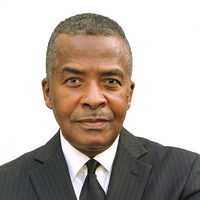 Keith Baker Keith Baker
Contact: Keith Baker (oliver.baker@yale.edu)
Website: https://physics.yale.edu/people/keith-baker
In-lab opportunities
Quantum Information Science at the Energy and Intensity Frontiers in High Energy Physics
|
 Charles Baltay Charles Baltay
Contact: Charles Baltay (charles.baltay@yale.edu)
Website: http://hep.yale.edu/people/charles-baltay
Remote opportunities
Astrophysics/Cosmology experiment to study the acceleration of the expansion of the Universe and the nature of Dark Energy. The experiment has two parts, one space based and one ground based
|
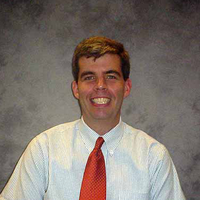 Sean Barrett Sean Barrett
Contact: Sean Barrett (sean.barrett@yale.edu)
Website: https://opnmr.physics.yale.edu/
In-lab opportunities
Doing more with less: Accelerating multidimensional NMR and MRI experiments using iterated maps.
|
 Meng Cheng Meng Cheng
Contact: Meng Cheng (m.cheng@yale.edu"> m.cheng@yale.edu)
Website: https://meng-cheng.github.io/
Remote opportunities
Two projects, defects in condensed matter and many-body open quantum systems. Directed reading on related topics, e.g. Topological phases of matter.
|
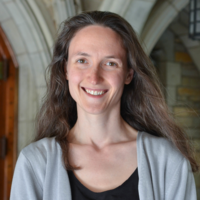 Sarah Demers Sarah Demers
Contact: Sarah Demers (sarah.demers@yale.edu"> sarah.demers@yale.edu)
Website: https://demerslab.yale.edu/
Remote opportunities
Working on the Mu2e Experiment trigger and commissioning, based at FNAL for the summer, or if during the semester, based at Yale.
|
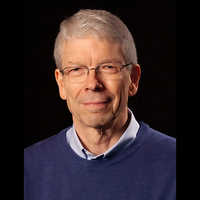 Steven Girvin Steven Girvin
Contact: Steven Girvin ( steven.girvin@yale.edu)
Website: https://girvin.sites.yale.edu/
In-lab opportunities
Theory of quantum control of qubits and oscillators. Analytical and numerical modeling to develop techniques to efficiently control the states of qubits (spins) and oscillators using microwave pulses. Prerequisite: PHYS 440 Co-requisite: PHYS 441.
|
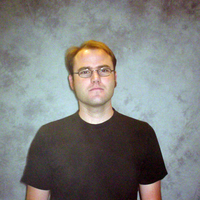 Walter Goldberger Walter Goldberger
Contact: Walter Goldberger ( walter.goldberger@yale.edu)
Website: https://het.yale.edu
In-lab and remote opportunities
I would be happy to meet regularly with an advance undergraduate or two to do some directed reading in theoretical physics. While I do not have a specific research project in mind currently that is accessible to undergrads, it is possible that some interesting problem worth pursuing might come up in the course of our readings.
|
 Jack Harris Jack Harris
Contact: Jack Harris ( jack.harris@yale.edu)
Website: https://harrislab.yale.edu/
In-lab and remote opportunities
- Project 1: Calculate the whispering gallery modes in a liquid sphere
- Project 2: Experiment with melting & sculpting optical fibers
|
 Helen Caines & Laura Havener Helen Caines & Laura Havener
Contact: Laura Havener ( laura.havener@yale.edu)
Website: https://rhig.physics.yale.edu/
In-lab and remote opportunities
 **Hardware Projects** **Hardware Projects**
We have various hardware R&D projects in the group related to preparing for the future Electron-Ion Collider. The EIC is a future collider coming at BNL that will study how quarks and gluons are arranged inside of nuclei, including how the nucleon mass and spin arise from this complex structure. In anticipation of the EIC, detectors need to be constructed. Our group is helping with R&D for various subsystems of the future ePIC detector. We have projects in the group contributing to these R&D efforts that will involve designing and/or testing aspects of experimental setups for these subsystems in Wright Laboratory. Examples of projects include:
- Determining the properties of scintillator tiles for the forward hadronic calorimeter in ePIC for the future EIC
- Characterizing photosensors for particle identification detectors in for the future EIC
- Constructing a cosmic muon detector array for science outreach
**Software Projects**
We study the strong interaction described by Quantum Chromodynamics (QCD). We use a high-energy QCD probe called a jet to study QCD in high-energy particle colliders (RHIC at BNL and LHC at CERN). For example, we are interested in studying the quark and gluon soup produced in high-energy collisions of heavy ions, the internal dynamics of nuclei, and the evolution of quarks and gluons into hadrons. These projects involve running Monte Carlo simulations of jets to explore aspects of their production and evolution:
- Measuring forward jet substructure in colliders for studying QCD
- Mapping the charged and neutral components of jets for jet substructure studies
|
 Karsten Heeger Karsten Heeger
Contact: Karsten Heeger (karsten.heeger@yale.edu)
Website: https://heegerlab.yale.edu
In-lab and remote opportunities
- Sensitivity calculations for the Project 8 neutrino mass experiment
- CUORE/CUPID detector testing at Gran Sasso, Italy (summer)
- DUNE charge readout plane testing at Wright Lab
|
 Steven Konezny Steven Konezny
Contact: Lane Healy ( lane.healy@yale.edu)
Website: https://konezny.sites.yale.edu/
In-lab opportunities
Materials for solar energy conversion applications
Project 1. Device Design and Characterization for Energy-Related Materials
This project involves studying charge transport in materials for solar energy conversion using various device architectures and methods. The student will learn thin-film fabrication and microscopy characterization methods, how to design and deposit electrodes, and useful techniques in the west campus clean room such as photolithography and optical profilometry.
Project 2. Theory of Charge Transport in Nanostructured Materials
Studying charge transport is important from a fundamental physics perspective, but also can provide guidance for material design. This project involves studying the mechanisms of charge transport important to nanostructured materials used for solar energy conversion. The student will learn how to apply these models to temperature-dependent electrical data. Programming experience recommended.
Project 3. Temperature-Dependent Charge Transport Measurements in Energy Materials
Our lab on west campus has a cryostat capable of accessing temperatures between ~7 and 315 K. By measuring the conductivity of materials in this range, one can decipher the mechanism of charge transport and learn valuable information about improving device performance. Because important materials for energy applications are often highly porous by design for achieving high surface area, conductivities are often very low. The cryostat is therefore equipped with highly sensitive electrical equipment capable of measuring currents on the order of femtoamps. This project is a study of charge transport as a function of temperature under various light and ambient gas conditions. Prior experience in LabView and Python would be helpful, though experience can be swapped for an interest to learn.
Project 4. Impedance Spectroscopy for Studying Materials for Energy Applications
Studying the resistance and capacitance properties of a material upon application of an ac signal can potentially provide much more information than dc methods. These data can be fit with an equivalent circuit model, each component of which corresponding to a particular physical process in the device. This project is an application of this powerful method, which allows complicated systems such as thin-film devices or electrochemical cells to be studied systematically. Some programming experience will be useful.
|
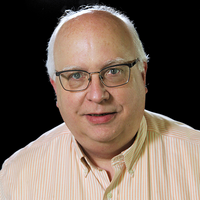 Steve Lamoreaux Steve Lamoreaux
Contact: Steve Lamoreaux ( steve.lamoreaux@yale.edu)
Website: https://lamoreauxgroup.yale.edu/
In-lab and remote opportunities
We currently have one undergrad and would like one more.
- Calculation of the effects of bound surface states regarding the spin polarization lifetime of optically pumped mercury that is planned to be used as a magnetometer in a neutron Electric Dipole Moment experiment.
- Measure the gravitational constant G toward understanding the systematic effects in current experiments.
|
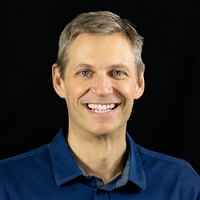 Konrad Lehnert Konrad Lehnert
Contact: Konrad Lehnert ( konrad.lehnert@yale.edu)
Website: https://physics.yale.edu/people/konrad-lehnert
In-lab opportunities
Current Interests:
- Quantum communications between superconducting qubits
- Mechanical systems for quantum information processing
- Quantum enhanced sensing for dark matter searches
- Superconducting electronics
Interested in adding an undergraduate to my group but haven’t thought in detail about the project during my lab building and set up. I plan to begin discussions with students in the early spring.
|
 Christopher Lynn Christopher Lynn
Contact: Christopher Lynn ( christopher.lynn@yale.edu)
Website: https://lynnlab.yale.edu/
In-lab and remote opportunities
We are interested in understanding how structure and function emerge in complex living systems, particularly the brain. We study how individual neurons interact to form networks; how whole-brain activity orchestrates cognition; and how humans communicate to process information. We approach these problems from a statistical physics perspective: seeking to identify the key minimal ingredients that combine to produce collective macroscopic phenomena.
|
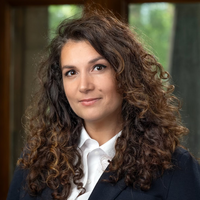 Chiara Mingarelli Chiara Mingarelli
Contact: Bjorn Larsen ( bjorn.larsen@yale.edu)
Website: http://www.chiaramingarelli.com/
In-lab and remote opportunities
Undergraduate students are welcome to apply to work with the Mingarelli Lab on the detection of supermassive black hole binary systems.
|
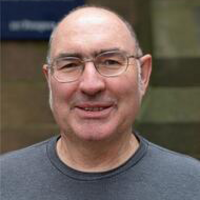 Simon Mochrie Simon Mochrie
Contact: Simon Mochrie ( simon.mochrie@yale.edu)
Website: https://mochrielab.yale.edu/
In-lab and remote opportunities
To build a lattice simulation of the chromatin polymers inside the nucleus of a yeast cell, including volume exclusion and looping.
|
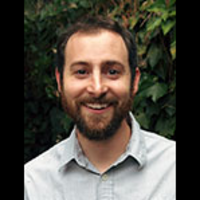 David Moore David Moore
Contact: David Moore ( david.c.moore@yale.edu)
Website: https://campuspress.yale.edu/moorelab/
In-lab opportunities
We have projects aiming to test fundamental physics at the precision frontier of nuclear and particle physics. Ongoing projects are in either searching for neutrinoless double beta decay (nEXO) or using levitated optomechanical sensors as probes of new physics (SIMPLE).
|
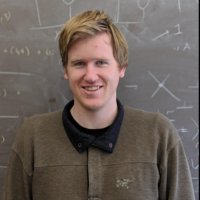 Ian Moult Ian Moult
Contact: Ian Moult ( ian.moult@yale.edu)
Website: https://physics.yale.edu/people/ian-moult
In-lab opportunities
Learning and developing quantum field theory techniques related to collider physics, and collaboration with experimental groups in Wright Lab.
|
 Daisuke Nagai Daisuke Nagai
Contact: Daisuke Nagai ( daisuke.nagai@yale.edu)
Website: http://www.astro.yale.edu/nagai/Welcome.html
In-lab opportunities
Nagai’s lab is focused on computational and data-driven modeling of multi-wavelength cosmological surveys, aiming to deepen our understanding of dark matter, dark energy, and gravity on the largest scales. Our current research involves developing and analyzing large hydrodynamical cosmological simulations to investigate the physics behind dark matter halo formation and evolution, as well as the properties of gas and stars within these halos. Starting in Spring 2025, we are primarily interested in recruiting students to participate in projects as part of the Interpretable Machine Learning working group (led by Naomi Gluck), including Physics-Informed Machine Learning. We aim to create a small group of students exploring various ML architectures, techniques, and datasets, prioritizing those who have taken PHYS378 and 343 for the requisite background and skills. Additionally, we expect students to attend the Physics & Data Science seminar and select projects in collaboration with some of the speakers to foster interdisciplinary collaborations.
|
 Laura Newburgh Laura Newburgh
Contact: Laura Newburgh ( laura.newburgh@yale.edu)
Website: https://campuspress.yale.edu/newburgh/
In-lab opportunities
I usually have a few undergrads working on our drone calibration project. In the past they have built new payloads, done timing tests, analyzed data, and helped with test flights. For this year, I anticipate a student would help us moves, set up, and test our local testbed dish since we are right in the way of construction!
|
 Corey O’Hern Corey O’Hern
Contact: Dong Wang ( dong.wang@yale.edu)
Website: http://jamming.research.yale.edu
In-lab opportunities
The O’Hern research group tackles a broad range of fundamental questions in soft matter and biological materials using a combination of theoretical and computational techniques.
|
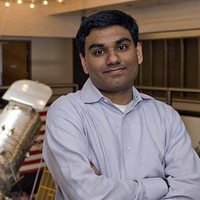 Nikhil Padmanabhan Nikhil Padmanabhan
Contact: Nikhil Padmanabhan ( nikhil.padmanabhan@yale.edu)
Website: https://physics.yale.edu/people/nikhil-padmanabhan
In-lab and remote opportunities
My group has projects related to two large galaxy surveys - the ongoing DESI survey and the upcoming NASA Nancy Grace Roman survey.
|